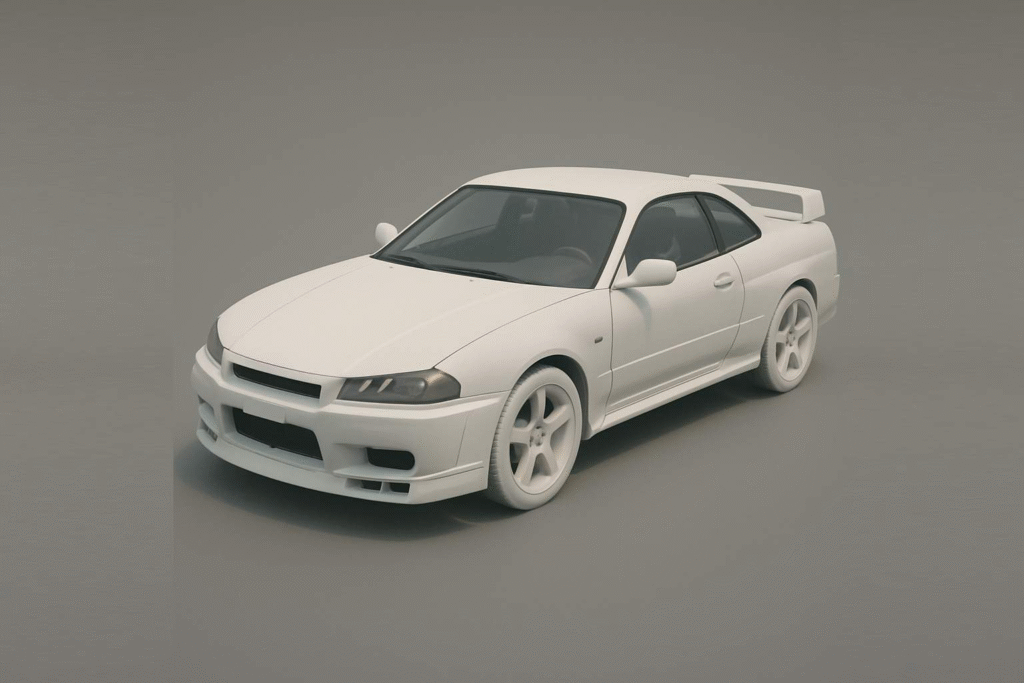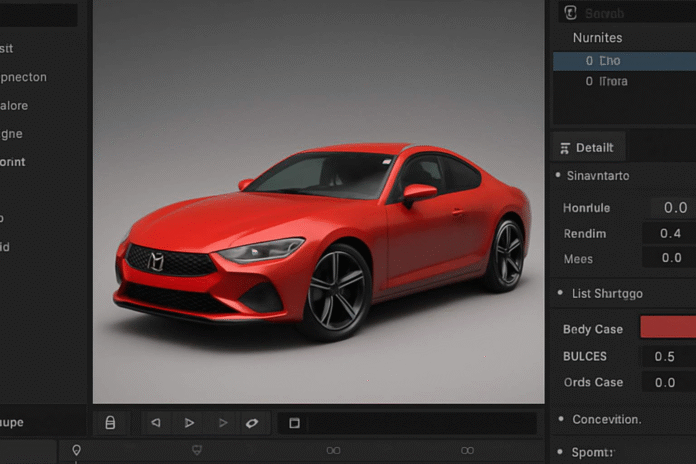Can You Use Blender or Unreal Engine for Car Design
In this exploration, we’ll delve into the capabilities of Blender and Unreal Engine for car design, evaluate their strengths and limitations, and consider how these platforms can be leveraged in advanced 3D automotive modelling. By doing so, we aim to provide insights into how these tools are reshaping the automotive design landscape and what this means for the future of car manufacturing and design.
Key Takeaways
- Innovative Tools for Automotive Design: Blender and Unreal Engine are revolutionizing the automotive design landscape by providing versatile and visually compelling alternatives to traditional CAD software.
- Blender’s Strengths:Cost-Effective: Being an open-source platform, Blender eliminates licensing fees, making it accessible for designers and studios, especially startups.Customizable and Flexible: Its capacity for customization through scripting allows designers to tailor their workflows, optimizing productivity.Strong Community Support: A robust online community offers numerous resources for learning and troubleshooting, aiding designers in overcoming challenges.
- Unreal Engine’s Advantages:Real-Time Rendering: Enables rapid iterations and adjustments, making the design process more dynamic and efficient.Immersive Experiences: Integration of VR and AR offers engaging design presentations, enhancing user experience during client interactions.High-Quality Visualizations: Produces photorealistic images that are valuable for presentations and marketing.
- Challenges to Consider:Learning Curve: Both platforms require time and effort to master, particularly for users transitioning from traditional CAD software.Need for Supplementary Tools: While both Blender and Unreal Engine excel in creative design, they may require integration with CAD software for engineering precision.
- Industry Adoption: Major automotive companies like Porsche and Tesla are already utilizing these platforms, showcasing their effectiveness in creating innovative and customer-centered designs.
The Role of 3D Design in Modern Automotive Innovation
The automotive industry has long relied on 3D modeling to visualize and iterate on car designs. This reliance has been traditionally fulfilled by Computer-Aided Design (CAD) software, which excels in precision and engineering specificity. However, with the advancement of technology, the industry has seen a shift from traditional CAD software to more versatile and visually compelling tools like Blender and Unreal Engine, which offer a new dimension of creativity and flexibility.
These platforms, renowned for their capabilities in game development, have slowly encroached on the domains of traditional automotive design software, offering unique advantages that can significantly enhance the design process. This shift is indicative of a broader trend where industries are starting to value visual storytelling and immersive experiences as much as engineering precision. The adoption of these tools is a testament to the evolving priorities within the automotive sector, where aesthetics and user experience are becoming as crucial as technical specifications.
Blender: A Powerhouse for 3D Automotive Modeling
Blender, an open-source 3D creation suite, is lauded for its flexibility and comprehensive toolset. It offers a wide array of features that enable designers to create intricate and detailed 3D models, making it a powerful tool for automotive modeling. Although not originally designed for automotive design, it has proven to be an adept tool in this realm, primarily due to its adaptability and the robust community that supports it.
Blender’s versatility allows designers to experiment with various design elements and styles, pushing the boundaries of traditional automotive design. This adaptability is crucial in an industry that is continually evolving and seeking new ways to capture consumer interest and drive innovation. As a result, Blender has become an essential tool for forward-thinking automotive designers who are willing to explore new horizons.
Advantages of Using Blender for Car Design
- Cost Efficiency: As an open-source platform, Blender provides a cost-effective solution for designers and studios, eliminating the licensing fees associated with traditional CAD software. This aspect is particularly appealing to startups and smaller design studios that need to manage costs without compromising on quality.
- Extensive Customizability: The ability to script and customize tools within Blender allows for a tailored experience that can accommodate specific design needs, making it an ideal choice for automotive designers looking for flexibility. Designers can create custom add-ons and scripts to streamline their workflows, which can lead to increased productivity and creativity.
- Robust Community Support: The vast Blender community offers extensive resources, including tutorials, add-ons, and forums, that can aid in overcoming design challenges. This community-driven approach not only fosters innovation but also provides a support network for designers, enabling them to share knowledge and collaborate on projects.
- High-Quality Rendering: Blender’s rendering capabilities can produce photorealistic images, essential for presentations and marketing materials in the automotive industry. The ability to create stunning visualizations can help designers convey their ideas more effectively, making it easier to gain approval from stakeholders and clients.
Limitations of Blender in Automotive Design
While Blender excels in many areas, it does have its limitations. The software can be less intuitive for those accustomed to traditional CAD systems, and its learning curve can be steep for newcomers. This steep learning curve can be a barrier for some, particularly for those who need to deliver results quickly.
Additionally, Blender’s focus on artistic design rather than engineering precision may necessitate supplementary tools for detailed engineering tasks. This limitation means that while Blender is excellent for concept design and visualization, it may not be suitable for tasks that require exact measurements and simulations, necessitating the use of additional software to achieve engineering precision.
Unreal Engine: Bridging Reality and Virtual Design
Unreal Engine, primarily a game development platform, offers real-time rendering capabilities that are transforming the automotive industry. Its use extends beyond video games into virtual reality (VR) and augmented reality (AR) experiences, making it a powerful tool for immersive car design. This ability to create immersive environments is becoming increasingly important as consumers demand more engaging and interactive experiences.
Unreal Engine’s real-time capabilities are particularly beneficial in the design process, as they allow designers to see changes instantly and adjust their designs on the fly. This dynamic and interactive approach can lead to more innovative designs and faster iterations, helping automotive companies stay ahead in a competitive market.
Benefits of Utilizing Unreal Engine for Car Design
- Real-Time Rendering: Unreal Engine’s real-time capabilities allow designers to see changes instantly, facilitating a more dynamic and interactive design process. This immediacy can lead to quicker decision-making and a more fluid design workflow, enabling designers to experiment and iterate rapidly.
- VR and AR Integration: The platform’s ability to integrate VR and AR provides designers with immersive experiences, enabling them to visualize and interact with car models in a virtual environment. This immersive approach can lead to more intuitive and user-friendly designs, as designers can experience their creations from the perspective of the end-user.
- High Fidelity Visualization: The engine’s advanced lighting and material systems produce high-quality visualizations, which are crucial for design validation and client presentations. These high-fidelity visuals can help communicate design intent more clearly and persuasively, making it easier to gain buy-in from stakeholders.
Challenges and Considerations
Despite its strengths, Unreal Engine’s complexity can be daunting for those unfamiliar with game development. The platform’s extensive feature set can be overwhelming, and mastering its capabilities requires a significant investment of time and effort. Companies looking to integrate Unreal Engine into their workflows must be prepared to invest in training and development to fully leverage its potential.
The platform’s primary focus on visual fidelity rather than engineering might require integration with traditional CAD software for precise measurements and simulations. This integration can add complexity to the design process, but it is often necessary to ensure that designs are both visually appealing and technically feasible.
Industry Applications and Case Studies

Real-World Examples of Blender and Unreal Engine in Automotive Design
Several automotive companies have already begun integrating these tools into their design workflows, illustrating their potential impact on the industry. These real-world applications demonstrate how Blender and Unreal Engine can enhance design processes and lead to innovative outcomes.
- Porsche and Unreal Engine: Porsche has utilized Unreal Engine to create immersive VR experiences for car design and marketing, showcasing the platform’s capabilities in delivering high-quality visualizations and real-time interactions. This approach not only enhances the design process but also provides customers with engaging experiences that can influence purchasing decisions.
- Tesla and Blender: Tesla’s design team has experimented with Blender for conceptual designs, leveraging its flexibility and cost-effectiveness to explore new design ideas without the constraints of traditional CAD software. By using Blender, Tesla can push the boundaries of design, exploring bold and innovative concepts that set them apart in the automotive industry.
Hiring Unreal Engine Developers for Automotive Projects
As the automotive industry continues to embrace these technologies, the demand for skilled developers proficient in Unreal Engine is rising. Companies looking to hire expert Unreal Engine developers should seek individuals with a strong understanding of both game development and automotive design, ensuring they can bridge the gap between these fields effectively. This combination of skills is crucial for creating designs that are both visually stunning and technically sound.
Moreover, companies should invest in ongoing training and development to keep their teams up-to-date with the latest advancements in Unreal Engine. This investment will not only enhance the capabilities of their design teams but also ensure they remain competitive in a rapidly evolving industry.
Conclusion: A Paradigm Shift in Automotive Design
The integration of Blender and Unreal Engine into automotive design signifies a paradigm shift in how cars are conceptualized and visualized. These platforms offer unique benefits that complement traditional design methods, providing cost-effective, flexible, and visually stunning solutions. This shift is indicative of a broader trend towards more dynamic and interactive design processes that prioritize user experience and engagement.
While challenges remain, particularly in terms of engineering precision, the potential for innovation and creativity is boundless. As industries continue to converge, the fusion of game development tools with automotive design promises to drive the future of transportation design into new and exciting territories. This convergence is not only reshaping the design landscape but also redefining what is possible in the automotive industry.
By embracing these technologies, automotive designers can unlock new levels of creativity and efficiency, setting the stage for the next generation of car design. The possibilities are as vast as the virtual worlds these platforms were initially designed to create, and their application in automotive design is only just beginning to be realized. This new era of design holds the promise of more innovative, efficient, and user-centric vehicles that will redefine the driving experience for years to come.
Frequently Asked Questions (FAQ)
1. Can Blender be used for professional car design?
Yes, Blender can be effectively used for professional car design. Its extensive toolset, cost-effectiveness, and strong community support make it a powerful option for automotive designers looking to create intricate and detailed models.
2. What are the advantages of using Unreal Engine in automotive design?
Unreal Engine offers real-time rendering capabilities, high-quality visualizations, and immersive experiences through VR and AR integration. This allows designers to experiment and iterate quickly, enhancing the design process significantly.
3. How does Blender compare to traditional CAD software for car design?
Blender provides greater flexibility and creative freedom compared to traditional CAD software, which is more focused on engineering precision. While CAD is essential for exact measurements and simulations, Blender excels at visual representation and concept design.
4. What challenges might designers face when using Blender or Unreal Engine?
Designers may encounter a steep learning curve when using Blender, especially if they are accustomed to traditional CAD systems. Likewise, Unreal Engine’s complexity can be overwhelming for those new to game development, necessitating significant training and development investment.
5. Are there industries that benefit from using Blender and Unreal Engine in car design?
Yes, the automotive industry, particularly in areas like marketing and customer engagement, benefits from these tools. Companies like Porsche and Tesla are using them to enhance design workflows and create immersive experiences.
